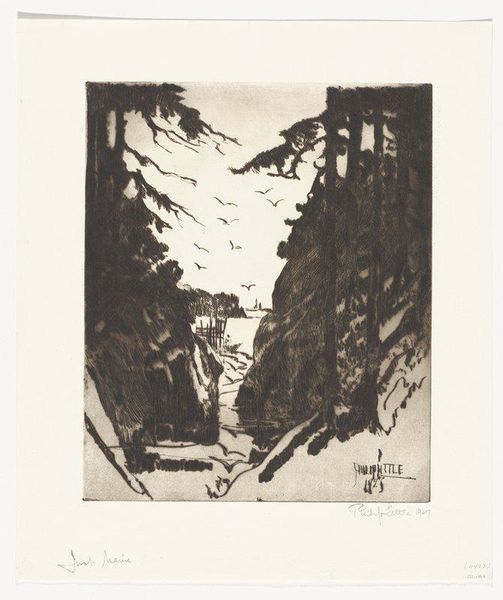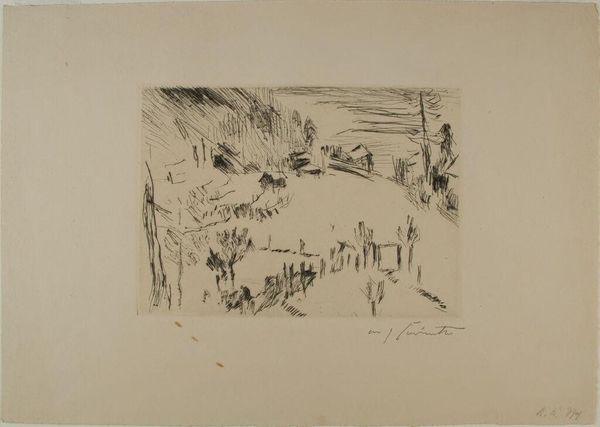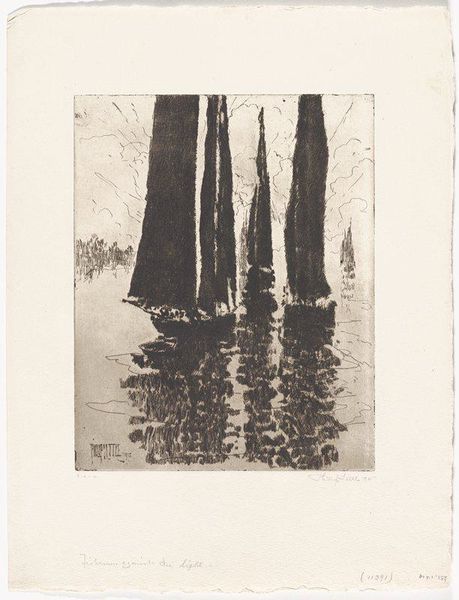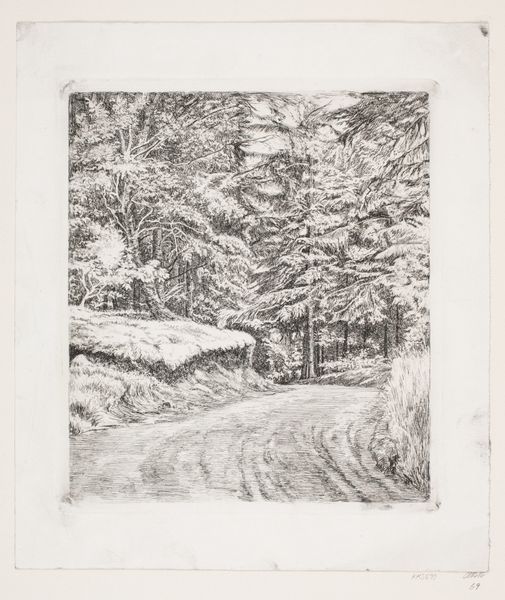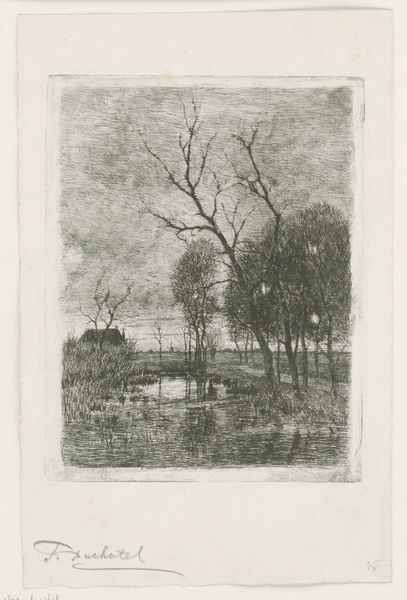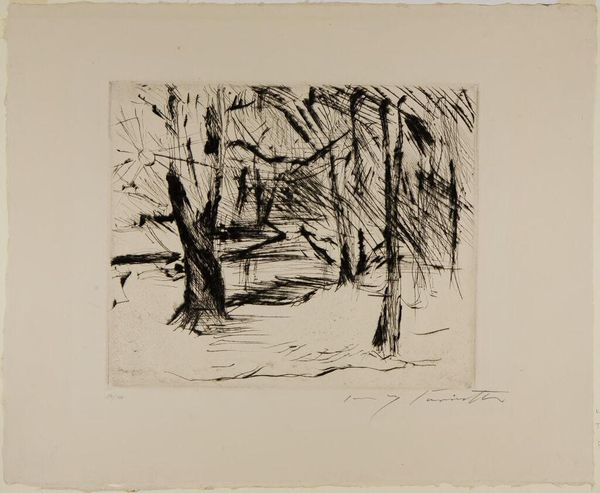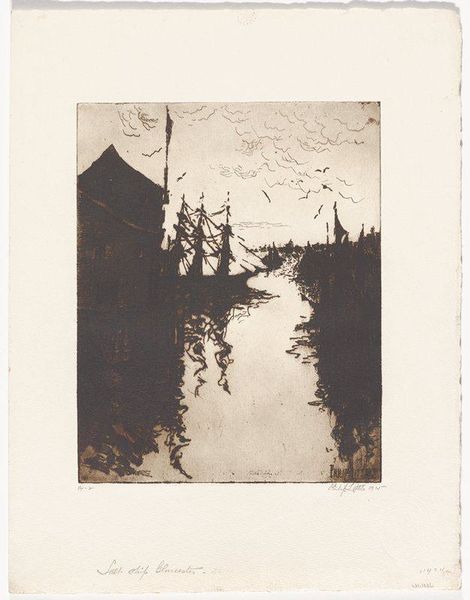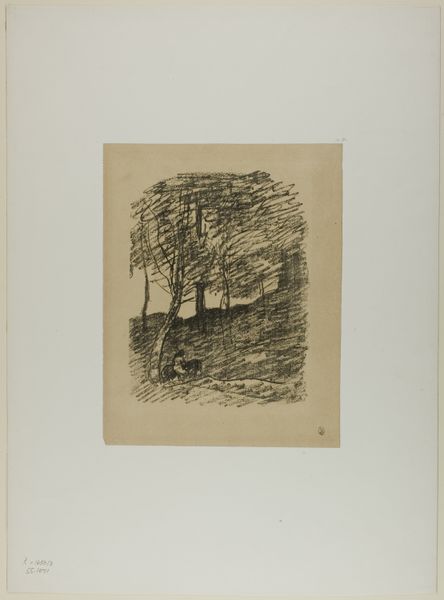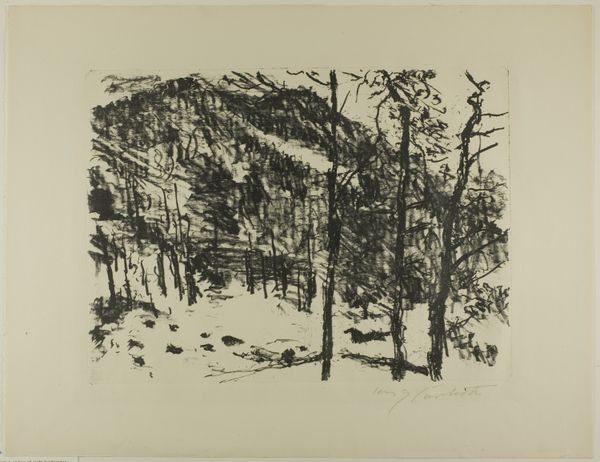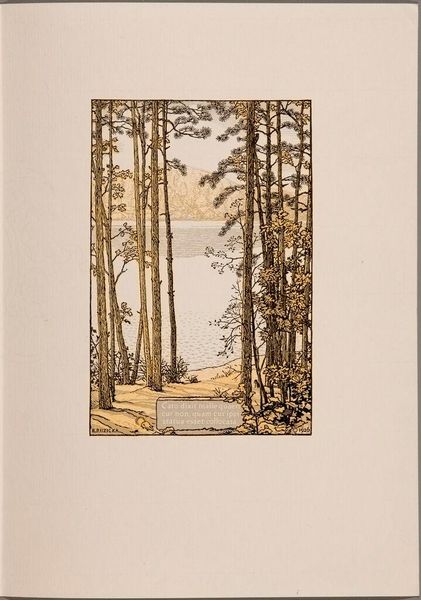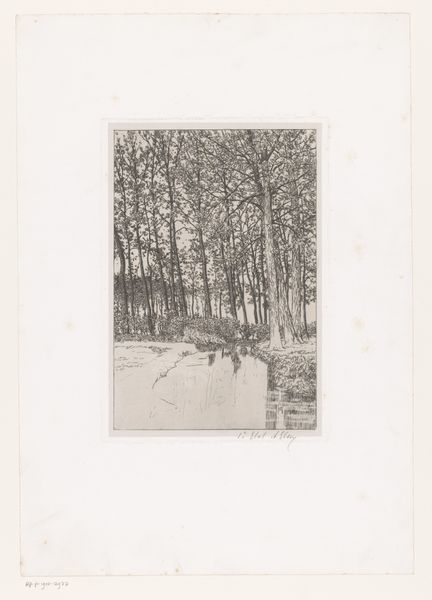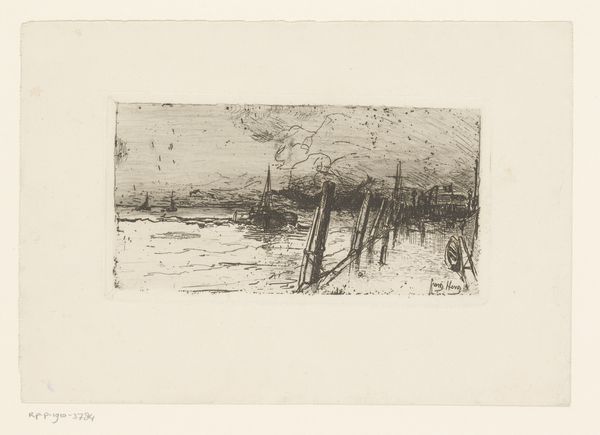
print, etching
# print
#
etching
#
landscape
#
etching
#
line
#
realism
Dimensions: 9 15/16 x 8 in. (25.24 x 20.32 cm) (plate)15 1/4 x 11 7/16 in. (38.74 x 29.05 cm) (sheet)
Copyright: No Copyright - United States
Curator: Let's discuss Philip Little’s etching from 1921, "The Old Weir - Mashahan Island," currently in the collection of the Minneapolis Institute of Art. What are your initial thoughts? Editor: The textures jump out. Look at how Little used line work to render the differing qualities of the trees, water, and even the distant shore. The composition seems designed to really showcase the materials themselves. Curator: I see that too, but my reading leans into how Little positions us, as viewers, within the narrative of the scene. Think about Mashahan Island in the early 20th century—what kind of place was it? What’s happening to the figures in the boat? Editor: An etching like this involves a very deliberate process. Coating a metal plate, etching with acid, the physical labor—all influencing the image and embedding a social context right into the object itself. Highlighting not only the island location itself, but the physical labor involved in accessing and developing it. Curator: Exactly! And Little's style aligns with broader conversations about American identity following World War I, the longing for simplicity and escape into nature amid rapid industrialization, reflecting an interest in earlier romantic interpretations of landscape. The figures in the boat feel both connected and separate. Editor: But also, an etching democratizes image production. Compared to painting, printmaking opens accessibility—the potential for wider distribution, impacting craft and accessibility debates of the time. Think of who might be consuming these images and how they connect—or don't—to the portrayed subject. Curator: Right—viewers both distant from and implicated in its social, economic, and artistic dynamics. The very act of landscape appreciation in this moment is interwoven with a complicated history of class, identity, and the gaze of privilege and belonging. Editor: It's a potent combination, this image. The directness of the etching highlights both the material origins of the piece and evokes considerations for those depicted and consuming. Curator: Absolutely. I find it interesting to trace the lineage of artistic influence and intention behind Little’s creation. Editor: And I consider how the work's materiality contributes to understanding how images—and places—were created and circulated at the time.
Comments
No comments
Be the first to comment and join the conversation on the ultimate creative platform.
